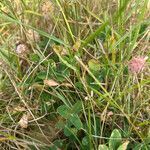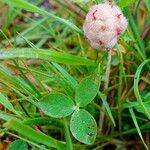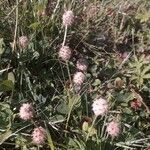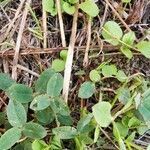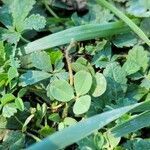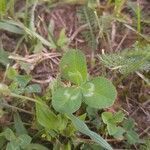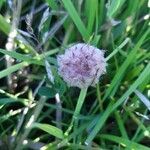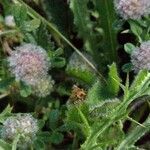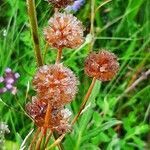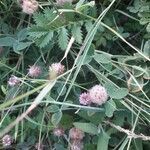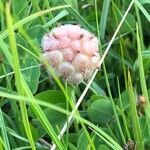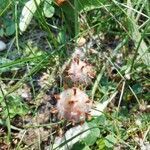Perennial herbs, stoloniferous, glabrous or hairy. Stems prostrate or decumbent, 10-30(-50) cm, rooting at nodes. Leaves palmately 3-foliolate, long petiolate; stipules linear-lanceolate to lanceolate-ovate, 1-2 cm, membranous, base sheathing, tip acuminate to subulate; leaflets obovate to obovate-elliptic, ± sessile, (5-)10-25 × 5-15 mm, glabrous or sparsely pubescent on veins, lateral veins 10-15, base broadly cuneate, apex rounded, retuse. Flowers 10-30, in crowded hemispheric or ovoid heads, 0.8-2.5 cm; peduncle axillary, to 2 × petiole; involucral bracts fused, lobes lanceolate, entire or toothed. Calyx bilabiate, strongly inflated in fruit, veins reticulate; teeth filiform, 2 upper longer than 3 lower, 2 upper and distal 1/2 of tube densely sericeous. Corolla white or pink, 6-8 mm; standard oblong. Ovary linear. Legume ovate-oblong, enclosed in inflated calyx. Seeds 1 or 2, brown, reniform. Fl. and fr. May-Aug.
Habitally like T. repens; peduncles becoming 8–15 cm; heads globose or ovoid, 10–15 mm thick at anthesis; fls 6–7 mm; cal bilabiate, the upper lip 2–3 mm, half longer than the lower and much more villous, the lobes narrowly linear, 0.7–1 mm; cor rosy; cal at maturity becoming reddish, greatly enlarged, strongly reticulate, and gibbous on the upper side, the lower lip scarcely altered; 2n=16. Native of Eurasia and n. Afr., becoming established as a lawn-weed here and there in our range. Summer.
